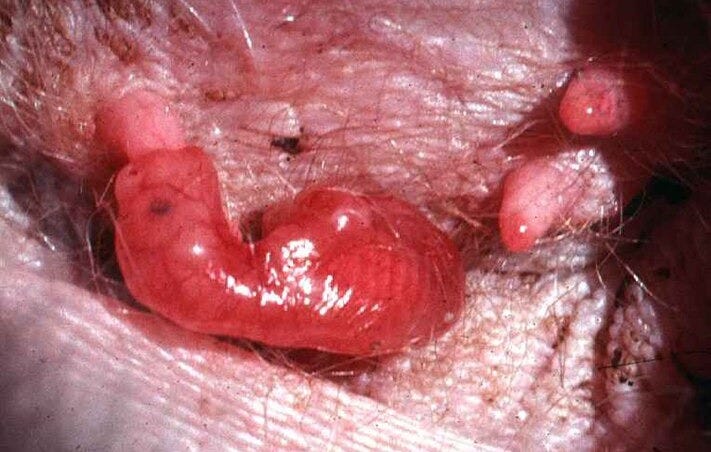
First-off, I’ve got some fun personal news. I’m planning a solo trip to Colombia this summer!
I’ve wanted to visit Colombia for a long time and leapt on a cheap airline ticket. Also, it’s an impetus to dust off my decades-neglected, skeletal Spanish (I remember “¿Donde está la playa?” and that’s about it). Planning to visit Medellín, Bogotá, and the coffee-growing region around the town of Salento, so if you have any recommendations for those areas, please write me!
How long do kangaroos stay in their mama’s pouch?

Did you know that baby kangaroos (a.k.a. joeys) weigh only 0.03 ounces at birth? Odd, considering that adult kangaroos are the largest marsupials on Earth and the largest mammals native to Australia.
I recently watched a short video on joeys and it got me thinking: how long do little roos stay in their mother’s pouch?
Turns out: they grow inside their mother’s marsupial pouch for a surprising 240 days! Unlike most mammals, kangaroos are born very underdeveloped and embryo-like. Considering how vulnerable they are at birth, they simply suckle inside their mother’s pouch for the first two months as they mature.

In three to four months, baby kangaroos begin to develop fur and recognizable features. After six to eight months the joey starts to leave its mother’s pouch for short periods before returning to feed. This latter stage is what we typically see when viewing pictures of baby kangaroos or spotting them in a zoo.
By the way, this edition of TTW is very baby-themed because I went down a rabbit hole this week. Although, I guess it’s more focused on motherhood and birth across the animal kingdom.
Which animal has babies the latest in life?
Thanks to science, it’s increasingly possible for humans to safely have children a decade later than previously possible. Several of my friends in their 30s and 40s planned for (or had) children these past few year, so I started to wonder: are there any animals on Earth that can have children later in life than humans?
Yes, of course there are, because nature is full of weird, awesome facts.
I wanted to know which animals had babies latest in life. My first guesses were elephants and sea turtles, given I knew both creatures live long lives (up to 70 and 100 years, respectively). As far as guesses go, they weren’t too off! Elephants can bear children until age 50. (Imagine carrying a 260-pound baby at age 50 for 12-18 months. No thanks.) Meanwhile, loggerhead sea turtles reach maturation around age 35 and can lay eggs every few years until late in life. And while the longevity of both their lives and fertility was impressive, it wasn’t the real answer to my question—I was searching for time on Earth rather than pregnancy until death.
The shift in nuance led me to discover an animal I’d never heard of.

Swamp wallabies, a cousin of the kangaroo, have babies from 15 months of age until the day they die. (As an aside, please check out that last link on swamp wallaby reproductive strategies for a wild read.) In fact, swamp wallabies always remain pregnant. This feat is possible because female swamp wallabies possess two uteruses, so they can conceive a new baby before birthing another. The only other animal we know of having two uteruses is the brown hare, but, unlike the swamp wallaby, it follows mating seasons for reproduction. Swamp wallabies typically live for 10 to 15 years, and often spend the last 95% of their life pregnant.
How do sea turtles rediscover where they were born?

When researching the first question in this newsletter about birthing cycles, I encountered the fact that most sea turtles return to where they were born to lay eggs. I wondered whether this was from memory or instinct, so I did a bit of digging and found this Nature paper published earlier this year that argues the reason why sea turtles can identify places like where they were born or need to go for food has to do with the Earth’s magnetic field.
While its long been hypothesized that certain animals can pinpoint where they need to go by learning the magnetic coordinates of their destination, new evidence regarding the loggerhead turtle indicates that these animals can also learn magnetic signatures of geographical areas. Researchers repeatedly fed juvenile loggerhead turtles in magnetic fields that replicated particular oceanic locations, and the turtles learned to distinguish magnetic fields. This can explain how a turtle can “recall” its birthing site, an feat previously unexplained. As for how a turtle is able to learn the magnetic signatures of places they visit, we still don’t know…
On that mysterious note, I’ll end this edition of TTW. I wish you a wonderful weekend!
Blake




So the kangaroo (and possums) are at the extreme end of the ‘precocial / altricial’ continuum - i.e. born less or more developed. The opposite end is the hamster, who, upon birth, is just a small adult hamster. Horses are altricial, because they have to stand up and go soon after birth.
Humans are eccentric here. The other apes tend to be more altricial, giving birth to babies who are carried and nurse, but who are soon up and about on their own. Humans, bless us, have been evolutionarily busy growing our crania, and given the geometry of the female human pelvis, need to get out of town before it’s too late. So we are born more precocial than other apes, and have to be nurse and potties and fed for a few years before we can participate. Plus, we have to learn all that language stuff. It’s complicated.